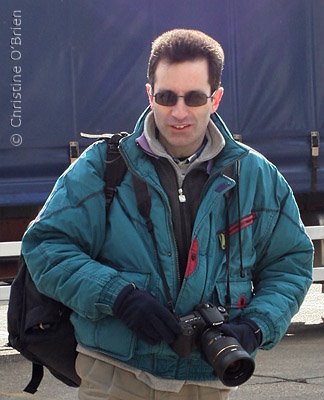Filters - Do you need them?

Camera shops must love filters. There are so many on the market, but I bet that the majority spend very little time in front of your lens. Is this a good thing, or should you be making better use of that "tobacco grad" that you bought two (or was it twenty) years ago? Of course there is no right or wrong, but I prefer to be sparing in my use of filters. Unless there are special circumstances, I normally carry four filters with me. Two of them are polarisers - one a screw-on one and the other a 4" Lee filter. I also carry a HiTech neutral density (.6 ND) graduated filter (this filter is clear at one end and gives a two stop reduction in transmitted light at the other) and a Lee 87 for use with an infrared modified camera as described in my piece on infrared digital photography (Shooting with an IR Rebel). I work on the principal that if it is obvious that a filter has been used you probably shouldn't have used it (the exception being for infrared), but also remember that rules are made to be broken.
Polarisers darken blue skies, suppress reflections and so often give the appearance of better saturated colours. ND graduated filters are normally used to reduce the contrast range within an image - for example when photographing a landscape if you find that the sky is too bright, you might otherwise have to darken the whole image or risk burning out the sky. The use of an ND grad would allow you to darken the upper portion of the image - the sky - without changing other parts of the image.
A word of warning. I understand from various sources that some of the inexpensive slot-in ND filters that are commonly available are not truly neutral (not an accurate grey), and may result in a colour cast in your image. This could be a problem particularly with a graduated filter. I believe that this was an issue familiar to users of Fuji Velvia film in particular, but may also be a problem for digital camera users. I have no personal experience of this as I do not have any of these filters. It does not occur with the better makes, but unfortunately they aren't available through most high street shops so you would need to find a specialist supplier.
I shall cover more on the use of polarising filters soon, including the difference between linear and circular polarisers, and also how to get the best from them.
I don't use UV or skylight filters (there may be one in a draw somewhere), nor do I keep any sort of filter over the lens for protection (sometimes referred to as an "optical lens cap"). Again, this is a matter of personal choice and also may be influenced by the conditions in which you work. For instance, if I were photographing a lot of coastal scenes I would probably use one as a protection from salt spray. As it is, I find that the use of rigid lens hoods is usually enough to protect the lens from harm and the only frequent cleaning that the lenses need is with a good quality blower (Giottos Rocket). I am in two minds about the use of UV filters for another reason. UV filters cut out UV light - hardly surprising. This reduces the appearance of atmospheric haze which may be visible in distant scenes. Sometimes you want to reduce this haze, but not always and since this is something that I often find very appealing - and can sometimes add to a sense of depth in an image - I see no reason to remove it in many images. If you chose to keep a filter in front of the lens it is probably best to use a good quality multi-coated one.
So to sum up, you will see that choice of filters is very personal. My choice will likely not be yours, but it is important to consider the use - and the purchase - of filters carefully. In many cases it would be better to spend the money on a train ticket to somewhere new and take some photos you would not otherwise have taken.
Image taken in Norway 2005

0 Comments:
Post a Comment
<< Home